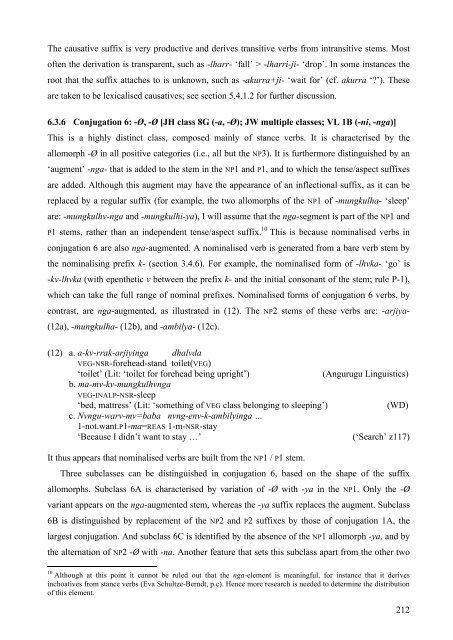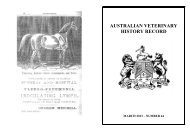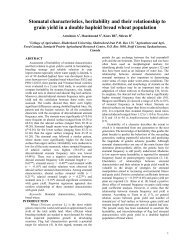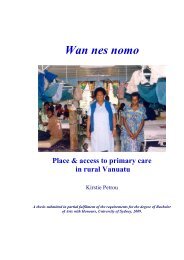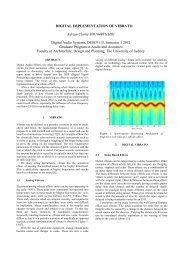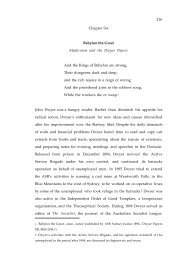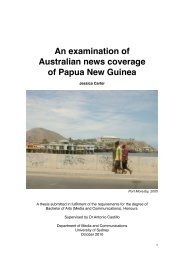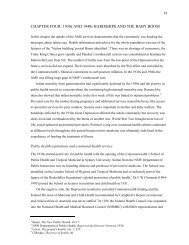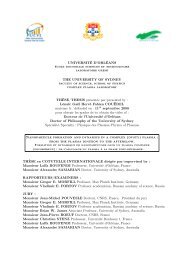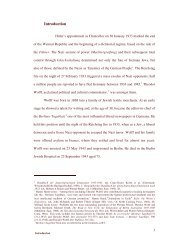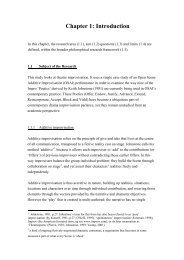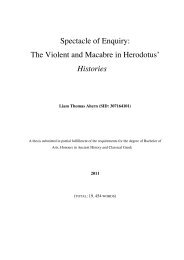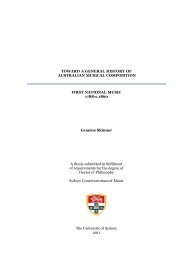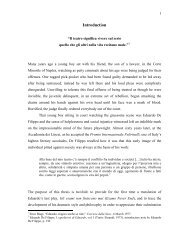Chapter 6: Tense, aspect and mood
Chapter 6: Tense, aspect and mood
Chapter 6: Tense, aspect and mood
Create successful ePaper yourself
Turn your PDF publications into a flip-book with our unique Google optimized e-Paper software.
The causative suffix is very productive <strong>and</strong> derives transitive verbs from intransitive stems. Most<br />
often the derivation is transparent, such as -lharr- ‘fall’ > -lharri-ji- ‘drop’. In some instances the<br />
root that the suffix attaches to is unknown, such as -akurra+ji- ‘wait for’ (cf. akurra ‘?’). These<br />
are taken to be lexicalised causatives; see section 5.4.1.2 for further discussion.<br />
6.3.6 Conjugation 6: -Ø, -Ø [JH class 8G (-a, -Ø); JW multiple classes; VL 1B (-ni, -nga)]<br />
This is a highly distinct class, composed mainly of stance verbs. It is characterised by the<br />
allomorph -Ø in all positive categories (i.e., all but the NP3). It is furthermore distinguished by an<br />
‘augment’ -nga- that is added to the stem in the NP1 <strong>and</strong> P1, <strong>and</strong> to which the tense/<strong>aspect</strong> suffixes<br />
are added. Although this augment may have the appearance of an inflectional suffix, as it can be<br />
replaced by a regular suffix (for example, the two allomorphs of the NP1 of -mungkulha- ‘sleep’<br />
are: -mungkulhv-nga <strong>and</strong> -mungkulhi-ya), I will assume that the nga-segment is part of the NP1 <strong>and</strong><br />
P1 stems, rather than an independent tense/<strong>aspect</strong> suffix. 10 This is because nominalised verbs in<br />
conjugation 6 are also nga-augmented. A nominalised verb is generated from a bare verb stem by<br />
the nominalising prefix k- (section 3.4.6). For example, the nominalised form of -lhvka- ‘go’ is<br />
-kv-lhvka (with epenthetic v between the prefix k- <strong>and</strong> the initial consonant of the stem; rule P-1),<br />
which can take the full range of nominal prefixes. Nominalised forms of conjugation 6 verbs, by<br />
contrast, are nga-augmented, as illustrated in (12). The NP2 stems of these verbs are: -arjiya-<br />
(12a), -mungkulha- (12b), <strong>and</strong> -ambilya- (12c).<br />
(12) a. a-kv-rrak-arjiyinga dhalvda<br />
VEG-NSR-forehead-st<strong>and</strong> toilet(VEG)<br />
‘toilet’ (Lit: ‘toilet for forehead being upright’) (Angurugu Linguistics)<br />
b. ma-mv-kv-mungkulhvnga<br />
VEG-INALP-NSR-sleep<br />
‘bed, mattress’ (Lit: ‘something of VEG class belonging to sleeping’) (WD)<br />
c. Nvngu-warv-mv=baba nvng-env-k-ambilyinga …<br />
1-not.want.P1-ma=REAS 1-m-NSR-stay<br />
‘Because I didn’t want to stay …’ (‘Search’ z117)<br />
It thus appears that nominalised verbs are built from the NP1 / P1 stem.<br />
Three subclasses can be distinguished in conjugation 6, based on the shape of the suffix<br />
allomorphs. Subclass 6A is characterised by variation of -Ø with -ya in the NP1. Only the -Ø<br />
variant appears on the nga-augmented stem, whereas the -ya suffix replaces the augment. Subclass<br />
6B is distinguished by replacement of the NP2 <strong>and</strong> P2 suffixes by those of conjugation 1A, the<br />
largest conjugation. And subclass 6C is identified by the absence of the NP1 allomorph -ya, <strong>and</strong> by<br />
the alternation of NP2 -Ø with -na. Another feature that sets this subclass apart from the other two<br />
10 Although at this point it cannot be ruled out that the nga-element is meaningful, for instance that it derives<br />
inchoatives from stance verbs (Eva Schultze-Berndt, p.c). Hence more research is needed to determine the distribution<br />
of this element.<br />
212


